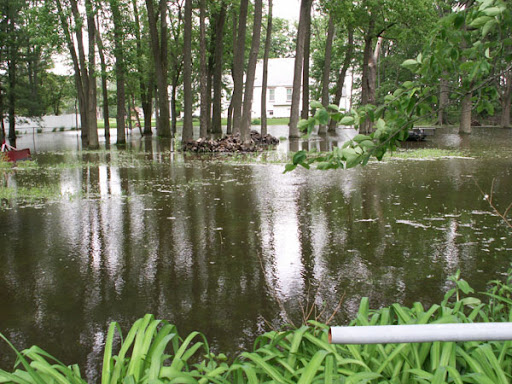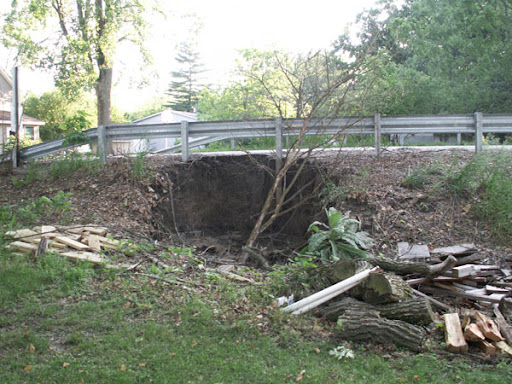As the heat of summer lures more boaters, campers and hikers to the great outdoors, NOAA satellites are primed for an inevitable spike in distress signals from emergency locator beacons.
Through May, 139 people have been rescued in the United States this year. In 2007, a record 353 people were rescued from potentially life-threatening emergencies thanks to NOAA’s polar-orbiting and geostationary satellites, which form part of the international Search and Rescue Satellite-Aided Tracking System, called COSPAS-SARSAT.
This high-tech system uses a network of satellites to quickly detect and locate distress signals from emergency beacons onboard aircraft, boats and from the handheld personal locator beacons. Now in its 26th year of operation, COSPAS-SARSAT has been credited with more than 23,000 rescues worldwide, including nearly 6,000 in the United States and its surrounding waters.
SARSAT statistics show a significant increase in rescues during the spring and summer seasons compared to colder weather months:
- In 2007, 87 rescues were made in the United States between January and March, but 111 people were saved between June and August.
- In 2003, 24 rescues occurred between January and March, but during the June – August period that number quadrupled to 96 lives saved.
“During the summer, we typically see a big jump in rescues because more people are out enjoying the warm weather,” said Chris O’Connors, program manager for NOAA-SARSAT. “But anyone planning to hike or camp this summer in a remote area where cell phone service is not reliable, or sail a boat far from shore, should not leave home without an emergency beacon registered with NOAA.”
When a satellite pinpoints a distress location within the United States, or its surrounding waters, the information is relayed to the SARSAT Mission Control Center at NOAA’s Satellite Operations Facility in Suitland, Md. The information is then sent to a Rescue Coordination Center, operated either by the U.S. Air Force, for land rescues, or the U.S. Coast Guard, for maritime rescues.
Older emergency beacons, which operate on the 121.5 and 243 megahertz (MHz) frequencies, will be phased out by February 1, 2009. That’s when 406 MHz beacons will become the new standard. Key reasons for the switchover include the ability of the 406 MHz beacons to be detected instantly; they are more accurate, and provide Search and Rescue responders with important registration information -- features the older beacons do not offer.
“We are encouraging all 121.5 MHz beacon owners to make the switch to 406 now, so their distress signals will always be answered,” said NOAA Corps Lt. Jeffrey Shoup, who is the support officer for SARSAT operations.
Shoup added, “There have already been a handful of aviation rescues this year attributed to the 121.5 frequency beacons, mostly in Alaska, but after February 1, such rescues by the SARSAT system will no longer be the case.”
The National Oceanic and Atmospheric Administration, an agency of the U.S. Commerce Department, is dedicated to enhancing economic security and national safety through the prediction and research of weather and climate-related events and information service delivery for transportation, and by providing environmental stewardship of our nation's coastal and marine resources. Through the emerging Global Earth Observation System of Systems (GEOSS), NOAA is working with its federal partners, more than 70 countries and the European Commission to develop a global monitoring network that is as integrated as the planet it observes, predicts and protects.
WEATHER NOTE
Indiana storms spawn 3 tornadoes
INDIANAPOLIS (AP) - Thunderstorms cut through south-central Indiana on Tuesday, spawning at least three tornadoes and causing widespread damage.
Tornado watches and flood watches or warnings remained in effect in the central part of the state this morning.
The National Weather Service tracked two tornadoes on the ground south of Indianapolis that triggered significant damage reports Tuesday night.
One storm was initially reported near St. Paul on the Shelby-Rush-Decatur line southeast of Indianapolis, where damage was reported to utility poles and wires were torn down. Weather Service meteorologist Joseph Nield said the same tornado apparently hit the village of Moscow in southern Rush County.
A dispatcher with the Rush County Sheriff's Department said this morning there were six injuries and no fatalities. The extent of the injuries was unknown. The storm destroyed a covered bridge in Moscow and damaged or destroyed several homes.
Another tornado was reported near Princes Lake north of Columbus and apparently then moved east to Edinburgh, meteorologist Logan Johnson said. A Johnson County sheriff's dispatcher said several tornado touchdowns were reported in the Edinburgh area. Damage also was reported in nearby Camp Atterbury.
Earlier in the day, the Weather Service said a small tornado touched down near Waverly, where television reports showed several trees down and buildings damaged.
Scattered damage was reported throughout central Indiana, and at one point more than 4,600 people were without electricity because of the storms. Power had been restored to about half of them by 11 p.m., Duke Energy reported on its Web site. Most of the outages were in Shelby County just southeast of Indianapolis and Wayne County in eastern Indiana.
One man suffered a broken foot Tuesday when storms damaged houses and trees about four miles north of Bedford, the Weather Service said.
Wind damage and heavy rain were reported in several areas and flash flooding warnings were issued.
Indiana Storm Damage
(Robin's note..... It's been one heck of a week and weekend. Not only did Indiana and Illinois have twisters but they also had a major and excessive rain event. 4.25" inches of rain fell in a matter of two to three hours.
These photo's were taken between June 4, thru 8th in the Wheatfield, Tefft and Demotte (Jasper County) and at Dunes State park in porter County Indiana of flood and storm damage.
The crop damage done by these supercells was extensive. On these days four wall clouds were spotted. There was also a twister report which is being investigated by KLOT just east of Rensselaer Indiana. The excessive rain also eroded away the bank of Dunn's Bridge on the Jasper/Porter County line where as now the bridge must be rebuilt.)

Tornadoes of June 7th
Below is a photograph taken of a large tornado across Will County Saturday afternoon.Photo received from Amy PavlikTORNADO JUNE 7TH LOOKING WEST BETWEEN PEOLONE & MONEE
Maritime Note
Remembering The Edmund Fitzgerald
50 Years ago today the most infamous vessel of the Great Lakes was launched. Farlane writes:
It was a beautiful Saturday afternoon on June 7th, 1958, as more than 10,000 people lined the banks of the Detroit River. They had come to witness the launching of Hull 301 at the Great Lakes Engineering Works of River Rouge, Michigan. Mrs. Edmun Fitzgerald, wife of the president of the Northwestern Mutual Life Insurance Company for which the ship was named, christened the brand new ship and at 12:34 p.m. the 729 ft. “Edmund Fitzgerald” slid gracefully into the basin amid cheers, salutes, and well wishers. READ>
PORTSMOUTH, Va. - Robert Brakes, a 60-year-old Morehead City, N.C., resident, is safe today after being rescued from a life raft off the North Carolina coast by the Coast Guard.
Brakes reported that his ordeal began after his sailboat began taking on water and capsized Wednesday evening.
"He reported that he attempted to contact help with his vessel's radio but was unsuccessful," said Lt.j.g. Scott McGrew of Coast Guard Sector North Carolina.
"He said his vessel sank so quickly he was unable to gather food, water or his ship's Emergency Position Indicating Radio Beacon (EPIRB)," said McGrew. READ>
RS
























![Validate my RSS feed [Valid RSS]](valid-rss.png)